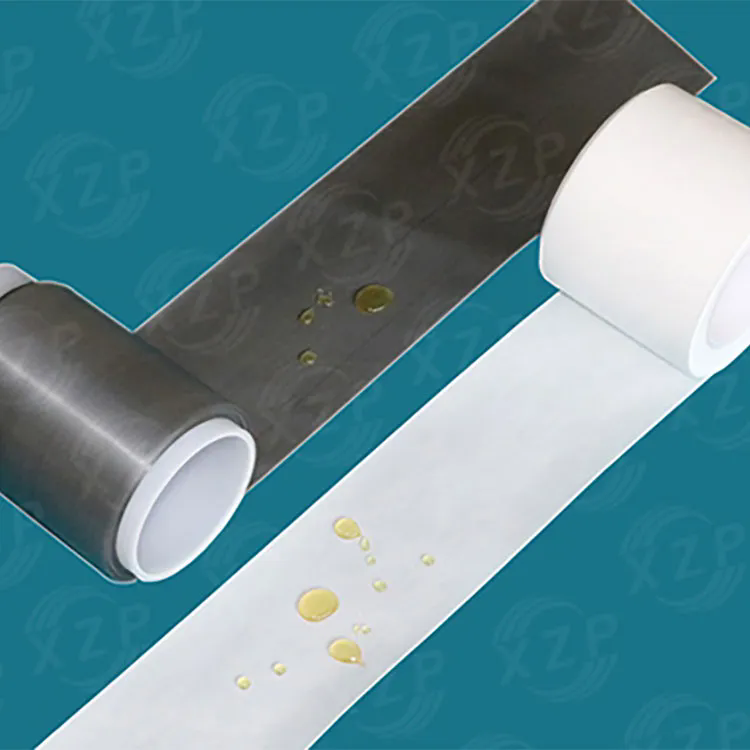Automotive Oleophobic Film: Your Complete Q&A Guide
2024-10-22
Automotive oleophobic film is a modern solution designed to protect vehicle surfaces from oils, fingerprints, and grime. In this blog, we’ll answer frequently asked questions to help you understand what it is, how it works, and why it’s beneficial for your car.
1. What is an Automotive Oleophobic Film?
An automotive oleophobic film is a transparent protective layer applied to various surfaces inside or outside vehicles. The term "oleophobic" means "oil-repelling," indicating the film’s ability to resist oils, fingerprints, dirt, and other greasy substances. It’s often used on displays, touchscreens, or sensitive painted surfaces to keep them clean and shiny.
2. How does an Oleophobic Film work?
The oleophobic film is treated with a special coating that creates a surface resistant to oils and water. When oily substances or fingerprints touch the film, they don’t stick easily, making it simple to wipe them off. This technology is similar to coatings used on smartphone screens and ensures surfaces stay cleaner for longer.
3. Where can Automotive Oleophobic Film be used?
Automotive oleophobic films can be applied to a variety of surfaces inside and outside the vehicle, such as:
Car infotainment screens
Touchscreen displays and dashboards
Instrument panels
Side mirrors and rear-view mirrors
Painted or chrome surfaces (optional film varieties)
4. What are the benefits of using Oleophobic Film in cars?
Reduces Fingerprints: Keeps touchscreens and glossy surfaces free from smudges.
Easy Cleaning: Repels oil and dirt, allowing surfaces to be wiped clean effortlessly.
Improved Visibility: When used on mirrors or screens, it reduces glare and fingerprint buildup, ensuring a clear view.
Scratch Resistance: Many oleophobic films also offer extra protection from scratches.
Maintains Aesthetic Appeal: Keeps interiors looking new and polished over time.
5. What types of Oleophobic Films are available?
There are several varieties of automotive oleophobic films based on their features and intended uses:
Anti-Glare Films: Reduce screen glare from sunlight.
UV-Resistant Films: Offer extra protection against UV rays to prevent fading of screens and surfaces.
Self-Healing Films: Repair minor scratches over time to maintain clarity.
Matte or Glossy Finish Films: Depending on aesthetic preferences for interior surfaces.
6. How is Automotive Oleophobic Film applied?
Applying the film is a straightforward process, but it’s important to follow these steps for optimal results:
1. Clean the Surface: Make sure the surface is free from dust, oils, and debris.
2. Align the Film: Position the film carefully to ensure a perfect fit.
3. Apply the Film: Peel off the adhesive backing and press the film onto the surface.
4. Remove Air Bubbles: Use a soft squeegee or cloth to smooth out any bubbles.
5. Let it Set: Allow some time for the film to adhere fully.
Professional installation is recommended for larger or exterior applications to avoid imperfections.
7. How do I maintain surfaces covered with Oleophobic Film?
Use Microfiber Cloths: Clean the surfaces with a soft, microfiber cloth to prevent scratching.
Avoid Harsh Chemicals: Use water or mild cleaners to wipe the film-covered surfaces.
Periodic Check: Inspect the film occasionally for signs of wear and replace it as needed.
8. How long does the Oleophobic Film last?
The lifespan of an automotive oleophobic film depends on the quality and usage conditions. High-quality films can last 1-3 years or more, especially with proper care. Interior applications generally last longer than exterior ones due to less exposure to harsh elements.
9. Are there any downsides to using Automotive Oleophobic Film?
While oleophobic films offer many advantages, there are a few things to consider:
Replacement Required: Over time, the oleophobic coating may wear off, requiring a new film.
Professional Installation Recommended: For complex surfaces, installation can be tricky without experience.
Limited Oil Resistance: While the film repels oils, it may not prevent buildup completely over long periods without cleaning.
10. Is Automotive Oleophobic Film worth it?
Yes! Automotive oleophobic films are an excellent investment if you want to maintain the cleanliness and aesthetics of your car’s interior and exterior surfaces. They make cleaning easier, extend the life of screens, and help your car look newer for longer.
11. Conclusion
Automotive oleophobic films are an innovative way to protect and maintain the appearance of your vehicle’s surfaces. Whether you’re concerned about greasy fingerprints on your touchscreen or scratches on your mirrors, these films provide a practical and cost-effective solution. With the right installation and care, they can keep your car looking polished and clean for years to come.



